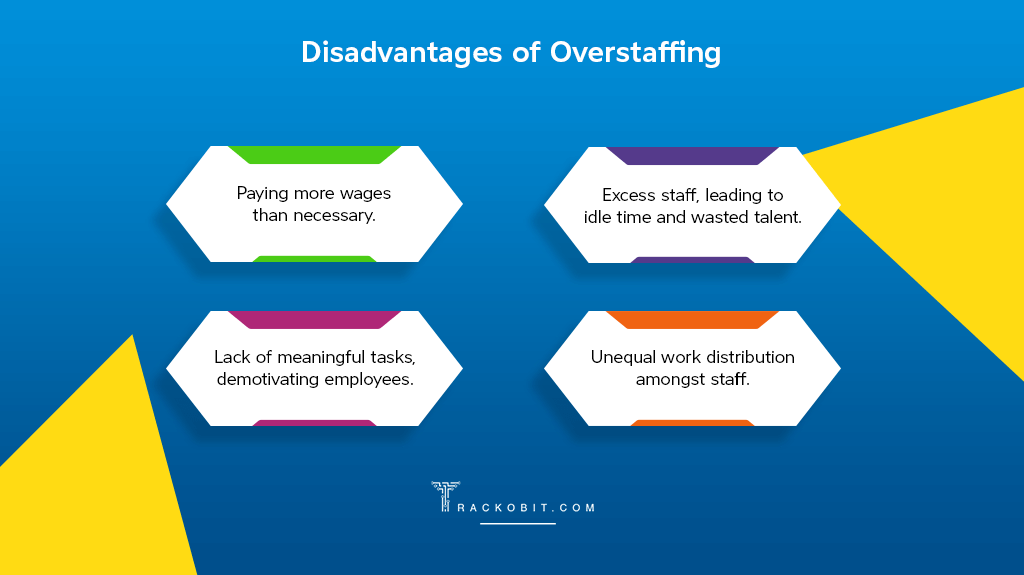-
TrackoBit
Manage commercial vehicles with the new-age Fleet Management Software
TrackoBit -
TrackoField
Streamline your scattered workforce with Field Force Management Software
TrackoField -
Features Resources
-
Blog
Carefully curated articles to update you on industrial trends. -
White Paper
Insightful papers and analysis on essential subject matters. -
Glossary
Explore an alphabetical list of relevant industry terms. -
What’s New
Get TrackoBit & TrackoField monthly updates here. -
Case Study
Explore the cases we solved with our diverse solutions. -
Comparisons
Compare platforms, features, and pricing to find your best fit.
-
About Us
Get to know TrackoBit: our team, ethos, values, and vision. -
Careers
Join the most dynamic cult of coders, creatives and changemakers. -
Tech Support
Learn about our technical support team and services in detail. -
Events
Check out the exhibitions where we left our marks and conquered. -
Contact Us
Connect with us and let us know how we can be of service.
What Causes Overstaffing? 8 Effective Ways to Deal With Overstaffing Problems
- Author:Nandita Gupta
- Read Time:6 min
- Published:
- Last Update: February 4, 2025
Table of Contents
Toggle
Overstaffing bleeds profits! Know what causes overstaffing and which 8 smart and strategic ways like targeted hiring, and data-driven schedules can help combat overstaffing problems. “Save big, hire wise”!
Table of Contents
Toggle
For many enterprises, staffing needs fluctuate throughout the week, month, and year. Especially for businesses that have service-based business or seasonal demands. To meet such rising demand, many organisations end up hiring excess human resources. Thereby putting unnecessary pressure on the company’s bank account.
Do you know overstaffing can cost businesses up to 20% of their profits? Many companies may face serious financial problems, and even bankruptcy, if they do not timely track their staffing needs and current strength.
In this piece, we are sharing some creative strategies that you can apply to mitigate the repercussions or causes of overstaffing problems — before they overpower you. Before that, let’s understand what is overstaffing and why it is so dangerous.
What is Overstaffing?
Employee overstaffing is when enterprises hire more people on the job than required. In simple terms, when too many people are onboarded for the limited workload. This is scary and expensive for small businesses.
For example – Imagine infosys hiring 500 employees and having a workload of only 250 people. Rest 250 are past their training period, sitting on the bench and waiting to work on the project.
What Causes Overstaffing?
No organisation aims for overstaffing. It happens due to the following reasons:
- Poor assessment of current utilisation rate and recruitment.
- Lack of field employee tracking and management solutions in place.
- Unpredictable and unstable workload changes.
- Fluctuating labour demand (when there is more demand during peak seasons)

Disadvantages of Overstaffing – Worst Case Scenarios
Overstaffing has more negative implications than positive. This event not only puts a strain on the financial standings of the company but also snatches away employees’ potential to mark their unique identity in the crowd. Here are the disadvantages of overstaffing from different points of view.
POV 1 – Financial Burden to the Company
—-> Increased payroll or labor costs: It increases labour costs which eat up the company’s margin and put a strain on the company’s budget (especially, during the slow business phase).
—-> Poor workflow and communication: Overstaffing can be chaotic and confusing. It leads to unclear tasks and responsibilities allocation. This adds to a lot of duplicated efforts, miscommunication, and major of all — missed deadlines.
POV 2 – Lack of Motivation Within Employees
—-> Unused resources: When employees are underutilized, technology, equipment, and talent go wasted. This is a significant expense that could have been directed towards more productive areas.
—-> Lack of work: Individuals can become bored and disengaged with more employees than work to go around. This can lead to a decrease in productivity and overall efficiency.
—->Decision paralysis: Having too many cooks in the kitchen can impede timely decisions, as opinions and conflicting ideas can slow down the process.
—-> Boredom and frustration: Too many employees feel bored and frustrated when they don’t have challenging work.
—-> Competition and conflict: When there are human resources, it creates competition and conflict among employees. This disturbs team dynamics and destroys overall workplace culture.
—-> Job insecurity: Overstaffing leads to job insecurity amongst employees, worried about sudden layoffs. This leads to low morale and a high turnover rate.
8 Proven Ways to Reduce Overstaffing Challenges
Want to solve overstaffing problems? Here are 8 proven strategies that work.
1. Identify Current Staffing Needs
Overstaffing problems mainly occur because the recruitment panel fails to assess the current utilisation rates. It’s the first and foremost step to identify current workforce strength (both in-office and remote).
Also, organisations often fail to recognise whether the current strength is overworked or underutilized.
2. Have a Solid Staffing Plan
A poor staffing plan often results in overstaffing. As a business, it’s important that you recognize your current employee utilisation rate, and create a sustainable staffing plan that helps you reduce overstaffing impacts. Make a grid and evaluate the need for more staff, also:
- Analysing workload trends and patterns.
- Defining roles and tasks with a clear hierarchy.
- Assessing skill gaps, and forecasting future needs.
- Determining hiring timelines, budget, and recruitment strategies.
- Regularly reviewing and adapting the plan aligning with evolving organizational goals and fluctuations in demand.
Evaluating all the above factors will help you make an effective staffing plan and help solve your overstaffing issues.
3. Optimize Employee Scheduling & Allocation
It is the best strategy to consider cross-training or to go for part-time options, and rotational systems that could help meet fluctuating demands. Re-assess department or team structure, analyze task and assignment distribution accordingly. Doing so before the next hiring cycle will help you have a clear picture.
4. Say Hello to the “Gig Economy”
By adopting the gig economy you can tackle overstaffing as it supports on-demand work allocation. This allows businesses to hire staff based on immediate needs freely, this helps avoid excess labor.
Many companies are rooting for temporary positions and hiring workers for short duration as freelancers or as contractual employees. This method works best when you have seasonal or fluctuating workloads.
5. Hire “Smart Resources” Up Next
“Choose quality over quantity”. Focus on hiring versatile employees who possess cross-functional skills to manage tasks of different natures.
🔍 ProTip – Make sure you clearly define job requirements and qualifications to avoid hiring staff with unqualified skills.
6. The Difficult Resort – “Layoffs”
Layoffs are a bit bitter but a better approach when employment strength is increasing labor costs. Here are safe ways to plan and execute this tough process:
✅Honestly talk about this transition and the reason behind it to the affected employees.
✅Aid possible assistance with resume builder, networking, and potential job placement opportunities.
✅Provide severance packages that can aid them during the transition.
✅Plan layoffs discreetly and with respect. Don’t lack empathy.
7. Invest in Cross-Training and Upskilling Programs
Equip your existing employees with new skills. Go for training programs that can help expand their skill sets and allow them to work across departments as the need arises. Having a flexible workforce that can efficiently switch roles and responsibilities will be the best, especially for small businesses or start-ups.
8. Treat Symptoms of Overstaffing with TrackoField
Field employee tracking software like TrackoField lets you tackle overstaffing challenges by:
✅ Letting you assess historical data and current workloads which helps optimize employee scheduling.
✅ Offering insights into employee availability, and productivity, to ensure better allocation of tasks.
✅ By providing real-time visibility into field operations, which helps adjust staffing levels dynamically. This ensures that resources match demand – rightly.
This scaling software provides a proactive approach that not just helps prevent overstaffing and related labour costs, but also helps experience heightened operational efficiency.
🔍 Overstaffing vs. Understaffing – Which is Better?
Actually, neither of them is a good option. Optimised and well-balanced staffing is the key. Overstaffing leads to the wastage of financial resources while understaffing puts pressure on the existing staff which leads to poor service quality or overall productivity. Many field employee management software come with workforce management features, wherein it’s easy to track, monitor, and maintain optimum staff strength. Choose solutions that are proven to overcome overstaffing problems.
Here’s Your Final Takeaway!
Above we discussed what causes overstaffing and how it negatively impacts the financial standing of the company. To deal with it, organisations require proactive strategies like workload analysis, flexible employee scheduling, and task delegation based on skillset.
Balancing staff numbers is very important as it ensures cost-effectiveness, boosts efficiency and improves productivity levels. More than that, it helps maintain a positive work environment that keeps employees engaged and motivated.
Do you know which tool can help you keep a watch at optimum staff strength while ensuring efficient scheduling and dispatching? It’s TrackoField. If in doubt, why don’t you try its 7-day free trial?
FAQs on Employee Overstaffing
-
What happens when a company is overstaffed?
When a company is overstaffed, it leads to: - More people for a limited work - More labor costs, leading to a financial burden - Underutilization of skills and talents - Poor allocation of tasks
-
How to handle overstaffing?
To efficiently deal with overstaffing problems, it’s a must that you: - Have a predetermined staffing plan. - Leverage field employee tracking and management tools like TrackoField. - Plan layoffs as required. - Embrace the gig economy — work with freelancers and contractual employees. - Use shift scheduling tools.
-
How do you deal with an unequal workload?
To deal with the unequal workload, you must optimize task distribution after considering team strengths. Keep rotating the responsibilities for efficiency and fairness at work.
-
Signs that you have an overstaffing problem
Persistently idle employees and less workload indicate overstaffing issues within a company.
-
How do you encourage employees when overstaffed?
To motivate and encourage overstaffed strength, do the following: - Shift them within departments to expose them to other work prospects - Upskill and train them for other strategic roles and responsibilities
-
What are the advantages of overstaffing? Is it beneficial?
Overstaffing sometimes can be a godsend. It helps minimize pressure or stress during busy periods. And aids in faster task completion when needed.
Nandita is the Team Lead for Content Marketing at TrackoBit, bringing over a decade of experience in B2B, B2C, and IoT sectors. She has a proven track record of helping Read More
Related Blogs
-

Grameen Credit Score: Everything that NBFCs and MFIs Must Know in 2026
Shemanti Ghosh January 6, 2026Empower the underserved Joint Liability Groups (JLG), Self-Help Groups (SHG), and residents of rural India with better credit assessment and…
-

How MFIs Are Working In Modern Day Scenario? A Complete Breakdown
Mudit Chhikara December 30, 2025How field force automation is helping MFIs transform field operations.
-

Unified Field Workforce Dashboard: Monitor Tasks, Attendance & More In One Place
Mudit Chhikara December 15, 2025Bring full clarity to field operations with a single, real-time field workforce dashboard.
-

Loan Disbursement in NBFCs: From 15 Days to 3 Minutes – Learn How
Shemanti Ghosh December 11, 2025TrackoField’s AI-enabled field force automation software speeds up loan disbursals in NBFC with field agent task monitoring and facial attendance…

Subscribe for weekly strategies to boost field team productivity.
Your inbox awaits a welcome email. Stay tuned for the latest blog updates & expert insights.
"While you're here, dive into some more reads or grab quick bites from our social platforms!"Stay Updated on tech, telematics and mobility. Don't miss out on the latest in the industry.
We use cookies to enhance and personalize your browsing experience. By continuing to use our website, you agree to our Privacy Policy.

































